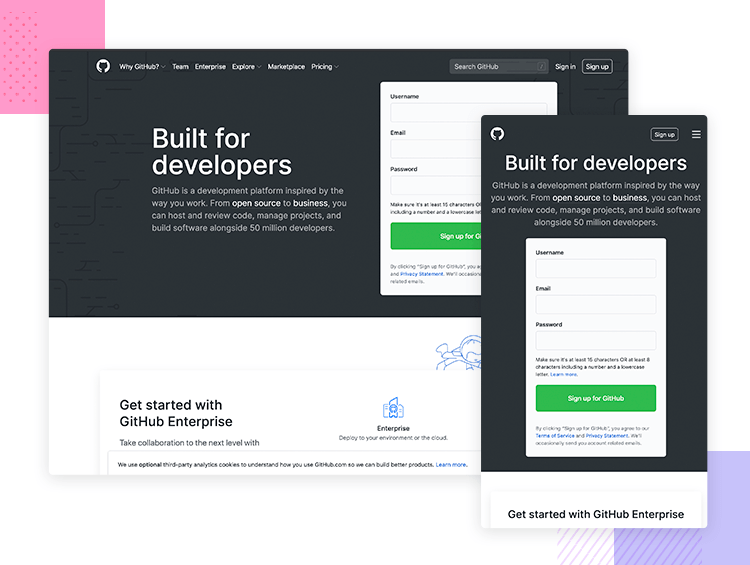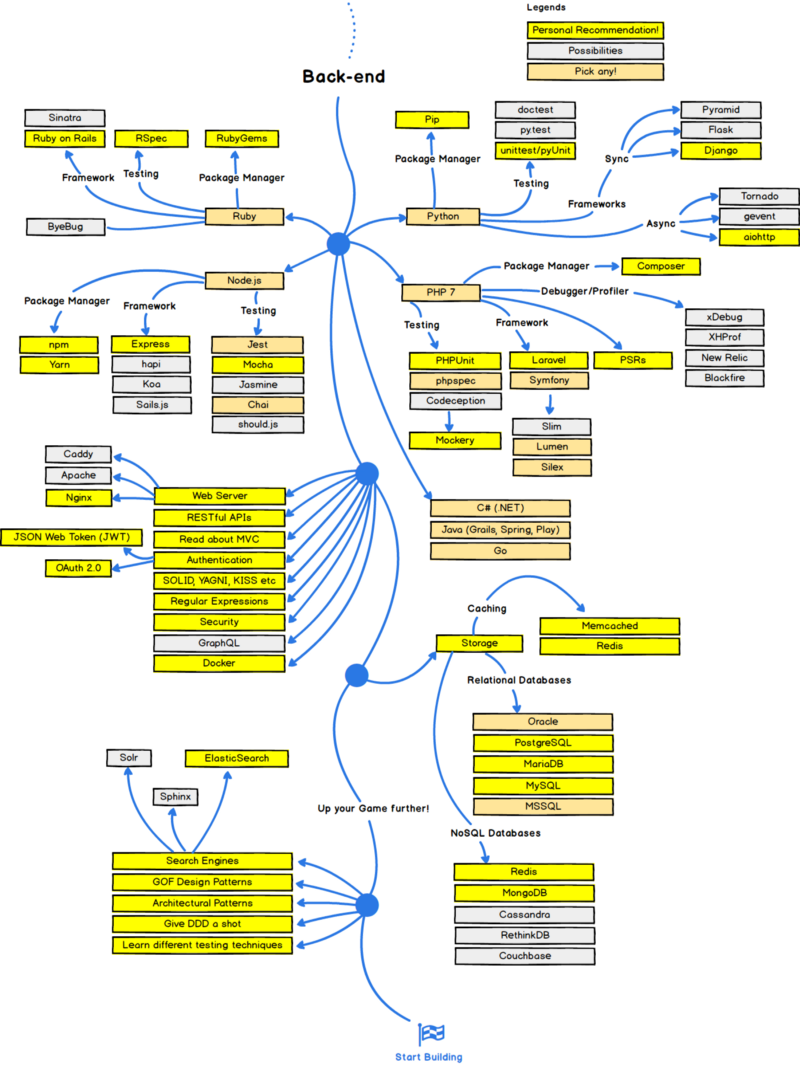
It is crucial to create a mobile app navigation that provides the best guidance for your users and makes their experience enjoyable. This can be achieved by simplifying your navigation menu. This will encourage users and other users to explore your app and take advantage of the features. It is important to ensure the layout of your app is consistent and coherent. A well-thought-out mobile app navigation design will also help you increase the conversion rate of your app and generate more leads.
To create a mobile app navigation system that works, the first step is to identify your target audience. This can be accomplished by conducting a basic test. To find the most popular formats for app navigation, you can do some research. These formats will assist you in designing your app navigation.
A mobile app that is intuitive and easy to use will be the best. The transitions must be consistent with the app's functions, and should be intuitive for the user. You can also make use of icons for easier navigation. Be careful not to use bright colors as they can be distracting.

App designers should also ensure that the fonts used in the navigation bar blend well with the main interface. They should also be intuitive to the user. The icons should correspond to the objects being accessed. You can also use labels and captions to indicate the different sections of the app. The labels should contain strong symbolism.
You should find the main sections of the app easily with just one hand. The swipe navigation pattern can help you do this. This pattern is also known by the name "list-type menu". A flat navigation pattern can be used to display all the functions of the app on one screen.
Another popular option for mobile app navigation is the bottom bar menu. This is a popular option for screens without a hierarchy. The icons displayed on the bottom bar menu are easy to recognize. However, the menu shouldn't have more than five icons in one palette. You should also refrain from using text on this type navigation bar.
For screens with a higher hierarchy, the top-bar menu is typically used. This is the standard navigation pattern used in apps such as Google Maps and Uber. You can also access other navigation elements from the top of your app bar. The best thing about the top navigation is its ease-of-use. The disadvantage is that it can make your menu bar too cumbersome.

Another option is to use a card navigational pattern. This popular navigation pattern allows you to display multiple interface elements simultaneously. This is particularly useful when you need to display multiple pieces of information on one screen. However, many designers have questioned its effectiveness.
FAQ
How To Create A Static Website
You have two options when creating your first static site:
-
Content Management System, also known as WordPress. WordPress: Download this software and install it to your computer. Then you can use it to create an essential website.
-
How to Create a Static HTML Website. In this instance, you will need to write your HTML/CSS codes. This is easy if you know HTML.
Consider hiring an expert to build your large website.
However, it is a good idea to start with option 2.
Is web development hard?
Although web development isn't easy, there are many resources online that will help you get started.
It is as easy as finding the right tools for you and following them step by step.
YouTube and other platforms offer many tutorials. There are also free online programs like Sublime Text and Notepad++.
You can also find many books in libraries and bookstores. The most widely-read books include:
O'Reilly Media presents "Head first HTML & CSS".
O'Reilly Media's Head First PHP & MySQL 5th edition
Packt Publishing - "PHP programming for absolute beginners"
I hope this article helps you!
Can I use a framework or template on my website?
Yes! Yes! Many people use pre-built frameworks or templates when creating websites. These templates include all of the code required to display the information on your webpage.
These are some of the most requested templates:
WordPress - the most widely used CMS
Joomla - Joomla is another popular open-source CMS
Drupal - an enterprise-level solution that large organizations use
Expression Engine is a Yahoo CMS that allows you to create custom CMS sites.
Hundreds of templates are available for each platform, so finding the right one should be easy.
Where can you find freelance web developers?
You can find freelance web designers and developers in several places. Here are some top options.
Freelance Websites
These sites provide job listings for freelance professionals. Some have very strict requirements, while some don't care which type of work it is.
For example, Elance offers high-quality jobs for graphic designers, writers, programmers, translators, editors, project managers, and many other positions.
oDesk features similar to oDesk, but they are focused on software development. You can apply for jobs in PHP, Perl Java, Java, C++ Python, JavaScript Ruby, iOS and.NET developers.
Another option is oWOW. Their website focuses on web and graphic designers. They also offer video editing, writing, programming, SEO, social media marketing, and many other services.
Forums online
Many forums offer members the opportunity to advertise themselves and post jobs. DeviantArt, a forum for web designers, is one example. If you type in "webdeveloper" into the search bar, you'll see a list containing threads from people looking to assist them with their sites.
Can I make my website using HTML and CSS?
Yes! If you've been following along so far, you should now understand how to start creating a website.
You now know how to build a website structure. Now you need to learn HTML and CSS coding.
HTML stands for HyperText Markup Language. Think of it like writing a recipe for a dish. You'd list the ingredients, instructions, along with directions. HTML also tells a computer what parts of text should be bolded, underlined or italicized. It is the language used to describe documents.
CSS stands for Cascading Style Sheets. You can think of CSS as a style sheet for recipes. Instead of listing out each ingredient and instruction, you write down general rules for things like font sizes, colors, spacing, and more.
HTML tells the browser how to format a web page; CSS tells it how to do it.
You don't have to be a prodigy if you don’t get the terms. Follow the tutorials below, and you'll soon be making beautiful websites.
Statistics
- In fact, according to Color Matters, a signature color can boost brand recognition by 80%. There's a lot of psychology behind people's perception of color, so it's important to understand how it's used with your industry. (websitebuilderexpert.com)
- The average website user will read about 20% of the text on any given page, so it's crucial to entice them with an appropriate vibe. (websitebuilderexpert.com)
- It's estimated that chatbots could reduce this by 30%. Gone are the days when chatbots were mere gimmicks – now, they're becoming ever more essential to customer-facing services. (websitebuilderexpert.com)
- Is your web design optimized for mobile? Over 50% of internet users browse websites using a mobile device. (wix.com)
- Studies show that 77% of satisfied customers will recommend your business or service to a friend after having a positive experience. (wix.com)
External Links
How To
How can I start as a UI Designer
There are two ways to become a UI designer:
-
You can complete school to earn a degree for UI Design.
-
You can start freelance.
You will need to complete four years of college or university study if you plan to continue your education. This includes art, computer science, business, marketing, psychology, etc.
You can also enroll in classes at state universities or community colleges. Some schools offer free programs, while others charge tuition fees.
After graduating, you'll need to find employment. If you plan to work for your own business, you need to establish a client base. It's important to network with other professionals, so they know you exist.
You can also look for opportunities to intern at companies that specialize in developing web applications. Many companies hire interns in order to gain valuable experience before they hire full-time employees.
A portfolio will help you get more work once you have established it. Your portfolio should contain your work samples and details of the projects you worked on.
It's a great idea to email your portfolio to potential employers.
Being a freelancer means you need to market yourself. Advertise your services on job boards such as Indeed, Guru, Guru, and Upwork.
Freelancers often receive assignments from recruiters who post openings online. These recruiters search for qualified candidates to fill positions within specific industries.
These recruiters provide candidates with a project description that details the position's requirements.
Freelancers are not required by law to sign any long-term agreements. If you are looking to make a move, however, it is advisable to negotiate an upfront payment.
Many designers prefer to work directly with clients rather than through agencies. Although this may sound great, many lack the necessary skills.
Agency workers typically have extensive knowledge of the industry they're working in. They have access the right training and resources to ensure they produce high-quality results.
In addition to these benefits, agency workers usually receive a higher hourly rate.
One downside to working through an agency is the inability to have direct contact at work with the employer.
Being a successful UI designer requires you to be self-motivated, creative.
Also, you must have excellent communication skills both verbally and in writing.
UI designers are responsible for designing websites by creating user interfaces (UI) and visual elements.
They also ensure that the site meets users' needs.
This involves understanding the information users need and how to make your site work.
Wireframes can be created by UI designers with a variety tools. Before they begin designing, wireframing allows them to visualize the page's layout.
Online wireframe templates make it simple to create your own wireframes.
Some designers are solely focused on UI design while others blend UI design and graphic design.
Photoshop is used by graphic designers to edit images.
They then use Adobe InDesign to lay out pages and layouts.
Photographers capture images using digital cameras or DSLRs.
The photos are then uploaded into a photo editing program. Here they can add captions, filters, or other effects.
Afterward, the photographer saves the image in a file format compatible with the website.
It is crucial to consider all aspects when designing a website.
This includes research, planning and prototyping.
Research – It is essential to do extensive research before you begin a new project.
Planning - Once you've completed your research, you'll want to begin developing a plan.
Wireframing – A wireframe is a preliminary sketch or drawing of a webpage or application.
Prototyping - Prototypes help ensure that the final product matches the initial vision.
Testing - The prototype should undergo multiple rounds of testing to ensure it works properly.
Coding - Coding refers to the process of writing computer code.
Content Creation: Content creation can include everything from copywriting to managing social media profiles.
Publishing involves uploading files to a server, and making sure the site is accessible.
You will be required to study about other projects in order to work as a freelance UX/UI design.
One example is that some companies only need wire frames, while others need complete prototypes.
Depending on the type of project you accept, you may be asked to complete specific tasks.
For instance, if your job is to create wireframes you might have to make several over the course of time.
If you're required to build a complete prototype of a website, you may also be required to design a fully functional version.
It doesn't really matter what project you're working on, good interpersonal skills are vital.
You need to build strong relationships with potential employers as freelancers are hired primarily through referrals.
You must also be able communicate clearly both verbally as well as in writing.
A portfolio is an important part of any freelancer's arsenal.
It showcases your work and demonstrates your ability to deliver high-quality results.
This can be done online by creating a portfolio.
The best way to get started is to find websites similar to yours.
You can then search these websites to find out which one offers its services.
Once you have determined the best practices for you, you can begin to adopt them.
It's also beneficial to include links within your resume to your portfolio.